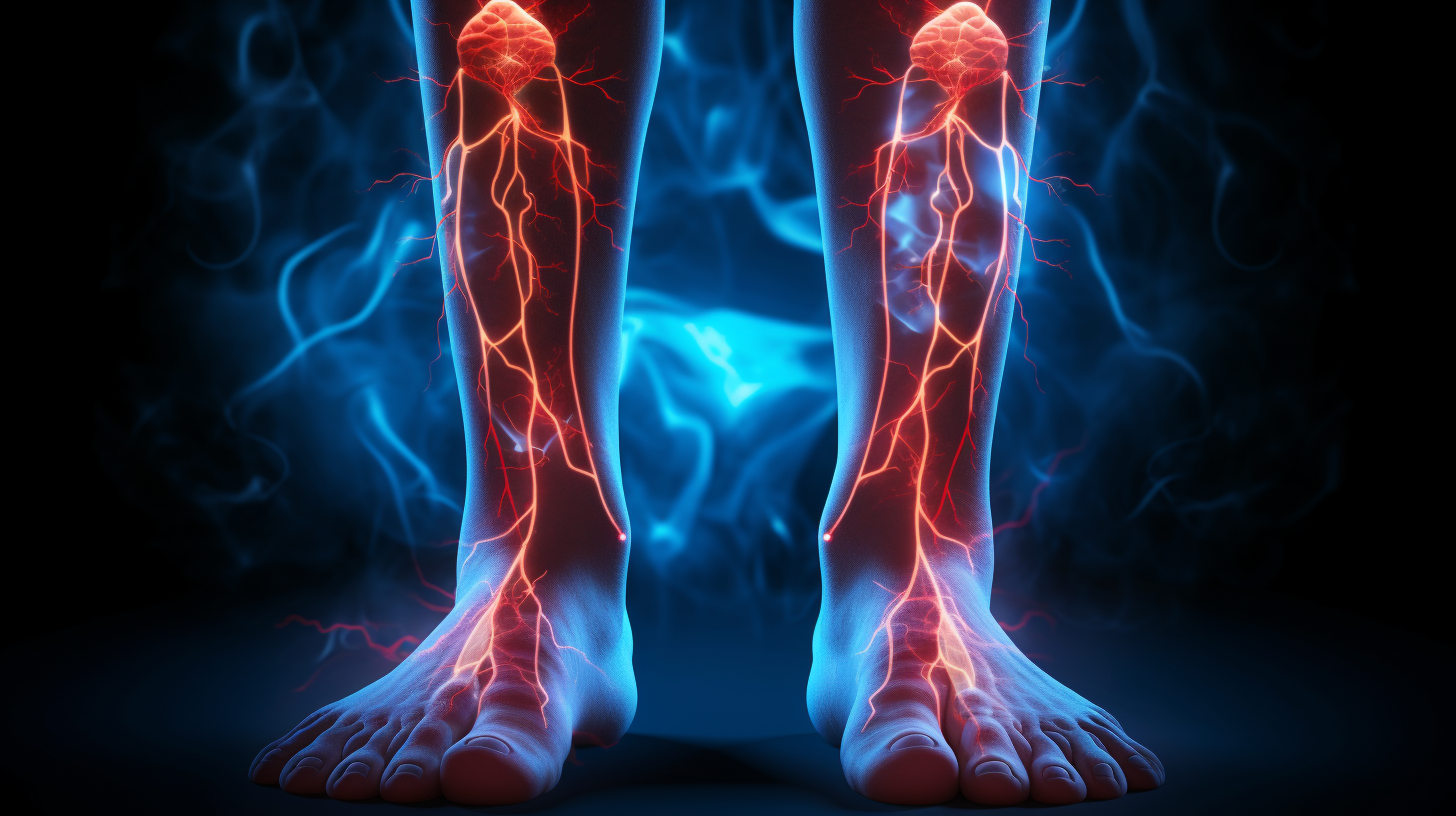What Do Compressions Socks Do?

Compression socks, a specialized form of hosiery, are specifically designed to promote enhanced blood circulation, mitigate swelling and discomfort, and prevent certain health complications such as deep vein thrombosis, venous ulcers, and varicose vein pain.
Available in three distinct variations, these include graduated compression stockings, anti-embolism stockings, and nonmedical support hosiery, each with its unique functionality and application.
The use of compression socks extends beyond therapeutic purposes, benefiting athletes, wheelchair users, pregnant women, long-distance travelers, and individuals in professions that require prolonged standing.
Despite the varied applications, all types of compression socks serve the common purpose of enhancing circulation and reducing discomfort and swelling. Try to wear compression socks or stockings if you are trying to enhance circulation and reduce discomfort and swelling.
These hosiery items can be worn throughout the day and require washing after each use.
This article aims to provide a comprehensive understanding of compression socks' functionality, diverse applications, and the potential beneficiaries of their use.
Key Takeaways
- Compression socks improve blood flow and reduce swelling and pain.
- Compression socks have various benefits, including boosting circulation, reducing swelling, improving lymphatic drainage, managing orthostatic hypotension, preventing blood pooling, deep vein thrombosis, venous ulcers, varicose vein pain, and venous hypertension.
- Compression socks can be worn by athletes, wheelchair users, pregnant women, airplane passengers or crew, and individuals who are on their feet all day at work.
- To put on compression socks, start by pulling them over the foot and unrolling up the leg, ensuring they fit securely but not painfully. They can be worn all day and should be washed and dried between each use.
What is the purpose?
Compression socks serve the purpose of enhancing blood circulation, alleviating swelling, and managing various venous conditions, thereby offering significant benefits to athletes, pregnant women, airplane passengers, wheelchair users, and those who spend long hours standing.
These socks operate by applying measured pressure to the lower legs, aiding the blood vessels to function better. The arteries that transport oxygen-rich blood to the muscles can relax, increasing blood flow. Simultaneously, the veins get a boost to push blood back to the heart.
The benefits of wearing compression socks are multifaceted. They not only enhance circulation but also decrease the risk of blood clots and varicose veins, making them particularly effective for individuals with mobility issues or those at risk of venous disorders. They can also mitigate symptoms of orthostatic hypotension and other circulatory issues.
Choosing the right compression socks involves considerations like the required pressure level, length of the socks, and whether they are medical-grade. Proper fitting is crucial to ensure effectiveness.
Tips for wearing and caring for compression socks include washing and drying them regularly, using talcum powder for easy wearing, and ensuring they are worn correctly, not too tight or loose.
Despite their benefits, it is always advisable to consult with a healthcare provider before starting to use compression socks.
Types and Uses
Specialized hosiery items such as graduated compression stockings, anti-embolism stockings, and nonmedical support hosiery offer varied benefits, ranging from boosting circulation and reducing swelling to preventing serious conditions like deep vein thrombosis and venous ulcers. These types of socks are designed to apply pressure to the legs and feet, improving blood flow and alleviating discomfort due to prolonged standing, immobility, or other factors.
The benefits of these socks are widely recognized in the athletic community, where they are used to enhance blood flow, deliver oxygen to muscles, and reduce fatigue during workouts or competitions. Similarly, pregnant women may utilize compression socks to alleviate swollen ankles and feet, a common discomfort during pregnancy.
In addition, these socks are indispensable for air travel, where they serve to prevent blood pooling and deep vein thrombosis in passengers or crew on long flights. Employees who stand for extended periods, such as healthcare workers or retail employees, can also benefit from the improved circulation and reduced fatigue these socks provide.
Therefore, the utility of compression socks extends to various segments of the population, offering a simple yet effective solution for numerous circulatory issues.
Who can benefit?
Individuals spanning a wide range of professions, lifestyles, and health conditions can reap the benefits of these specialized hosiery items. The benefits of compression socks extend to enhancing performance, promoting health, and providing comfort.
- Athletes and Exercise: Athletes, particularly endurance athletes, utilize compression socks to stimulate blood flow, thereby improving oxygenation of their muscles and enhancing their performance and recovery.
- Pregnant Women: Pregnancy often induces swelling and varicose veins due to increased blood volume and hormonal changes. Compression socks can ensure improved circulation and prevent these issues.
- Wheelchair Users: For individuals confined to a wheelchair, the lack of leg activity can lead to blood pooling and swelling. Compression socks can aid in promoting circulation and reducing such risks.
- Airplane Passengers: Extended periods of inactivity during long-haul flights increase the risk of deep vein thrombosis. Wearing compression socks can alleviate this risk by stimulating blood flow.
- Individuals Who Are On Their Feet All Day At Work: For individuals with occupations that require prolonged standing, compression socks can alleviate leg fatigue, swelling, and pain by promoting blood flow.
Occupation, lifestyle, or health condition, the advantage of compression socks is clear in promoting overall leg health and comfort.
Additional Uses
Beyond their conventional uses, these specialized stockings offer additional benefits across a diverse range of applications.
In athletic contexts, compression socks can improve blood flow and oxygen delivery, enhancing performance and recovery. Athletes often wear these socks on their arms or hands during workouts or competitions, leveraging their capacity to improve circulation and decrease inflammation.
For expectant mothers, compression socks can provide critical pregnancy support. Given their propensity to swelling, pregnant women may find these socks beneficial in preventing or reducing edema, offering a non-pharmacological intervention for discomfort.
Travel benefits are another significant aspect of compression socks utilization. Passengers or crew on long-haul flights can wear these socks to enhance circulation, mitigating the risk of deep vein thrombosis associated with prolonged immobility.
In the workplace, these socks can provide relief from fatigue and pain, particularly for individuals who spend long periods on their feet. By improving blood flow and reducing swelling, they can alleviate the discomfort associated with extended standing or walking.
Wheelchair users can also benefit from the use of compression socks. By improving circulation and reducing leg swelling, these socks can enhance comfort, poor blood flow, and overall well-being for individuals with mobility limitations.
Conclusion
In conclusion, compression socks serve a crucial role in enhancing blood circulation, minimizing swelling and discomfort, and averting medical issues such as deep vein thrombosis and varicose veins. Firm compression will provide some health benefits.
There are three types available, each catering to specific needs and demographic groups. Whether for athletes, pregnant women, or those standing for long periods, these socks offer considerable benefits. While there are some skeptics, many people report that compression socks work.
Compression socks come in various compression levels. If firm compression level is too much, try socks that provide mild compression.
Their usage and benefits highlight the importance of compression socks in maintaining leg health. This may lead some health providers to prescribe compression stockings to their patients. Before you wear compression socks, we recommend speaking to your health providers to see if they recommend compression socks. You can also commonly find them in a medical supply store.
Aside from that make sure to wash your feet with mild soap!
